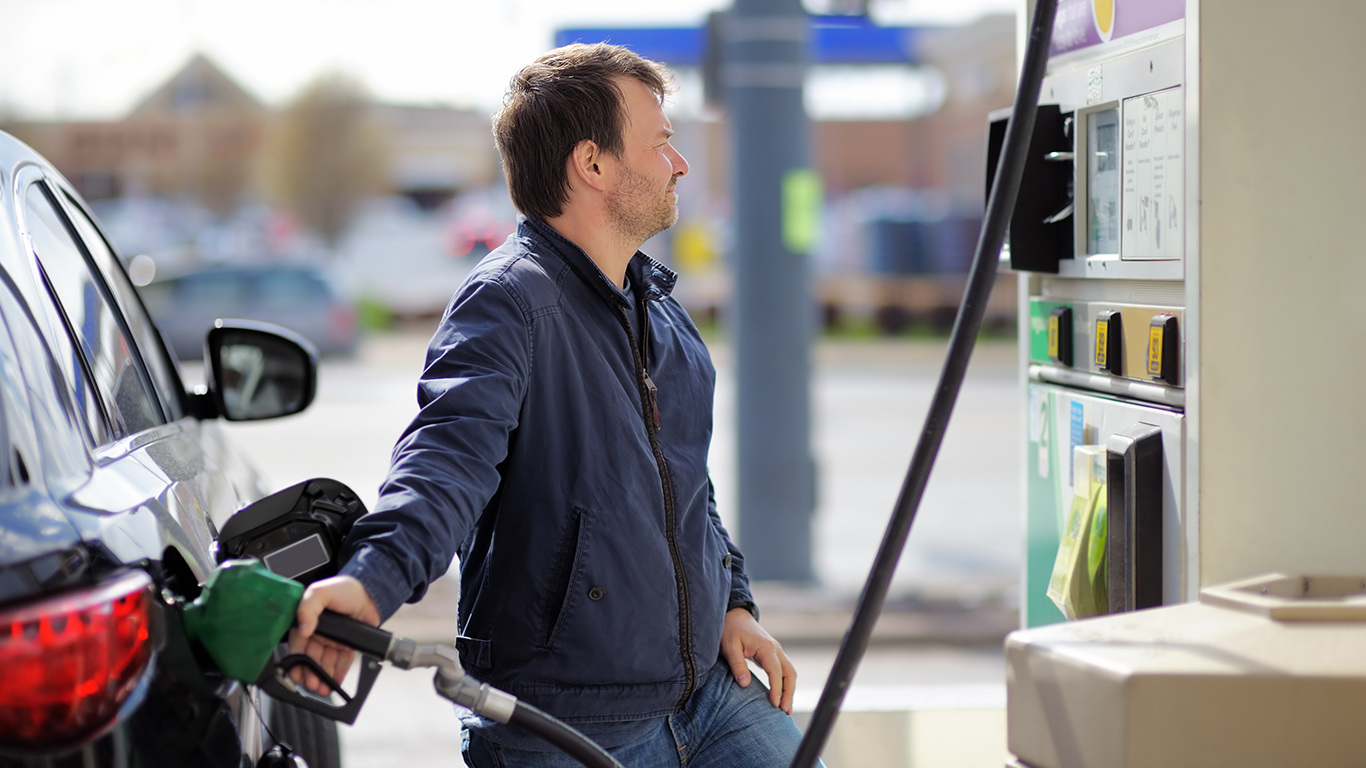
The national average pump price for a gallon of regular gasoline is a penny higher Wednesday than it was on Monday. At $2.90, the average is 20 cents a gallon more than it was just one month ago.
The state hardest hit by rising gas prices is California, where the average price was $4.08 a gallon Wednesday morning, down a penny from Monday’s average price. The state’s drivers pay $0.7368 per gallon in federal and state taxes, the second-highest rate among the lower 48 states. Only Pennsylvania drivers pay more, $0.771 per gallon, according to the American Petroleum Institute (API).
While drivers in no other state are paying $4 or more for a gallon of gas, drivers in nine more states are paying an average of more than $3 a gallon, according to Wednesday morning data collected by GasBuddy. They are Hawaii ($3.74), Nevada ($3.51), Washington ($3.49), Oregon ($3.38), Alaska ($3.36), Arizona ($3.15), Utah ($3.07), Pennsylvania ($3.05) and Idaho ($3.03). Gas prices are well on their way to a 12-month high.
While pump price increases have moderated, they will continue to rise for the next several weeks, as the Memorial Day holiday weekend approaches and demand for gasoline rises during the summer driving season.
Last year, pump prices actually declined by about four cents a gallon on May 1 to $2.35 a gallon, following an unexpected rise in U.S. gasoline inventories. By the time the holiday weekend rolled around, prices had risen by more than 60 cents a gallon, sparking fears that U.S. travelers would not hit the road for their summer vacations.
The national average price ahead of Memorial Day last year reached $2.98 a gallon, but it didn’t reach that level again all year and by December had dropped to $2.26 a gallon, the lowest average of the year. As reported earlier in April, gas prices were climbing to a record high for 2019.
Gasoline prices have been on a steadily rising path as U.S. refineries complete seasonal maintenance and production of distillates (diesel fuel) rises to accommodate new international regulations going into effect this year on low-sulfur marine fuel.
The state with the lowest price for a gallon of gas is Alabama, where drivers are paying $2.51 a gallon Wednesday morning, more than $1.50 less than California drivers. Nearly 40 cents of that price difference is due to lower gasoline taxes in Alabama. The other nine states with the lowest current prices are Mississippi ($2.52), South Carolina ($2.54), Louisiana ($2.55), Arkansas ($2.56), Missouri ($2.57), Tennessee ($2.60), Texas ($2.60), Oklahoma ($2.61) and Kansas ($2.63).
The U.S. Energy Information Administration (EIA) is expected to report later Wednesday that the national crude oil inventory rose by about 2.1 million barrels last week, while gasoline inventories are expected drop by about a million barrels. The API reported Tuesday night that the U.S. crude inventories rose by 6.8 million barrels and gasoline inventories dropped by about 1.1 million barrels in the week ended April 26.
Wednesday morning international benchmark Brent crude traded down less than 0.1% at $72.01 a barrel for July delivery and U.S. crude was trading down about 0.6% at $63.52 a barrel for June delivery. This is due to the fact that crude prices were pushed higher Tuesday night due to civil unrest in Venezuela. The instability is also why the country is among 28 others the U.S. government doesn’t want you to go to.
ALSO READ: Berkshire Hathaway Jumps Into Occidental-Chevron Battle to Acquire Anadarko, With Caveats
Essential Tips for Investing (Sponsored)
A financial advisor can help you understand the advantages and disadvantages of investment properties. Finding a qualified financial advisor doesn’t have to be hard. SmartAsset’s free tool matches you with up to three financial advisors who serve your area, and you can interview your advisor matches at no cost to decide which one is right for you. If you’re ready to find an advisor who can help you achieve your financial goals, get started now.
Investing in real estate can diversify your portfolio. But expanding your horizons may add additional costs. If you’re an investor looking to minimize expenses, consider checking out online brokerages. They often offer low investment fees, helping you maximize your profit.
Thank you for reading! Have some feedback for us?
Contact the 24/7 Wall St. editorial team.



